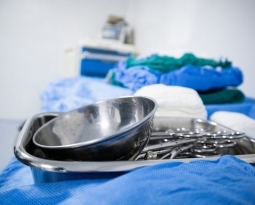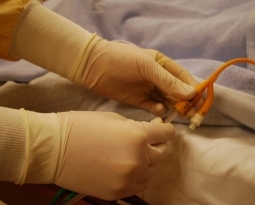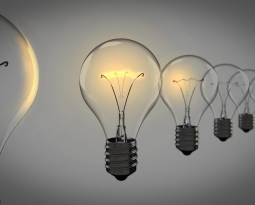Minnesota Patent of the Month – July 2022
Babies are meant to be safe in their cribs, but if it’s poorly designed they may find themselves at risk. If the slats along the side are too wide, they may fall through. Too narrow, and they may get their limbs stuck and hurt themselves as they try to twist their way out. The best way to keep your baby safe is to tackle the source of the problem. That’s why BreathableBaby, LLC set out to develop safe sleep products to keep babies safe and bring parents some peace of mind.
The company has been designing and manufacturing these smart and safe cribs since 2002, continuously innovating for greater safety and performance. Recently, the company was awarded a patent for their durable crib shield system.
Crib liners seem like a good idea from a high level. A liner or bumper is used to prevent babies’ hands and legs from going through the slats and getting stuck, or might offer a little padding in case they bang their head. However, research has shown that these liners and soft bedding can be fatal. If a baby ends up sleeping face-down on a too-soft material, they likely won’t be able to roll out of that position, and may suffocate. On May 16 2022, President Biden signed into law the Safe Sleep for Babies Act (H.R.3182), which prohibits the manufacture and sale of padded crib bumper pads and inclined sleepers.
BreathableBaby’s design uses a breathable material with reduced suffocation resistance levels. An inner and outer fabric are connected by a pile substructure which allows air to move effectively through. This design differs from other “breathable” or “mesh” bumpers which have numerous layers of material that can trap exhaled carbon dioxide. This trapped CO2 can contribute to suffocation if the infant’s face is pressed into the fabric. Instead, BreathableBaby’s design uses thin fabric in minimal layers which ensure CO2 cannot be trapped. Their design has been independently tested for safety by CPSC-accepted third party testing labs. These tests have shown their mesh liners designed for US crib styles meet or exceed ASTM F1917 Standard Consumer Safety Performance Specification for Infant Bedding and Related Accessories.
Are you developing new technology for an existing application? Did you know your development work could be eligible for the R&D Tax Credit and you can receive up to 14% back on your expenses? Even if your development isn’t successful your work may still qualify for R&D credits (i.e. you don’t need to have a patent to qualify). To find out more, please contact a Swanson Reed R&D Specialist today or check out our free online eligibility test.
Who We Are:
Swanson Reed is one of the U.S.’ largest Specialist R&D tax advisory firms. We manage all facets of the R&D tax credit program, from claim preparation and audit compliance to claim disputes.
Swanson Reed regularly hosts free webinars and provides free IRS CE and CPE credits for CPAs. For more information please visit us at www.swansonreed.com/webinars or contact your usual Swanson Reed representative.

















